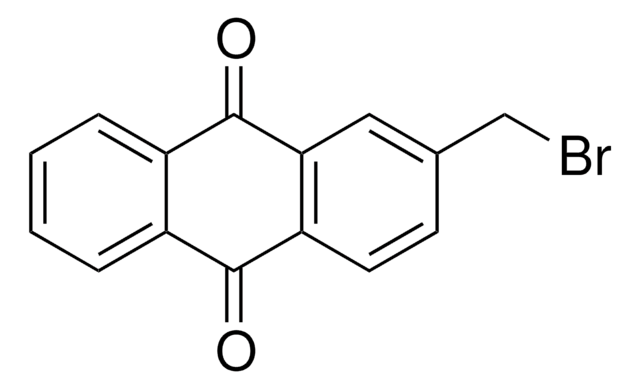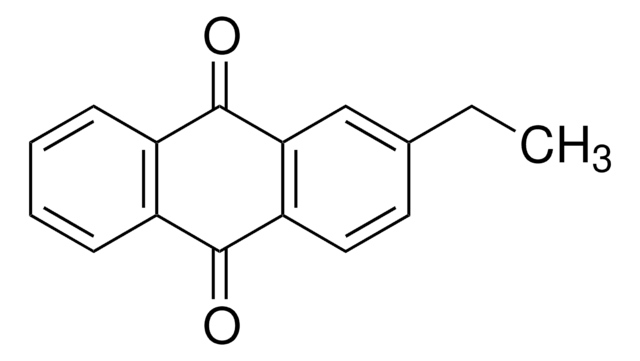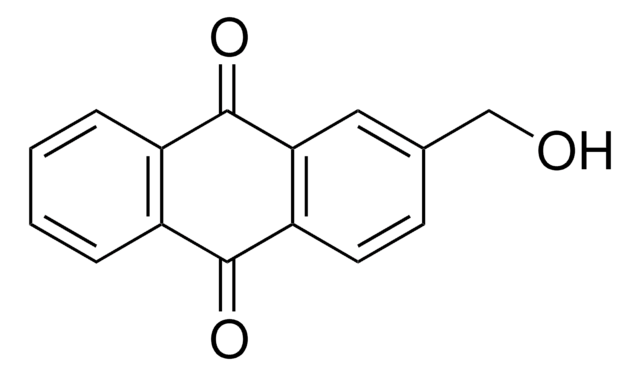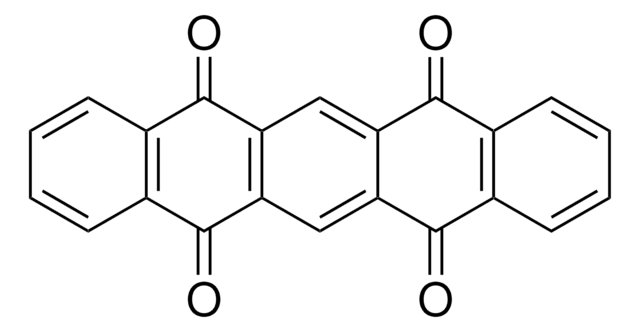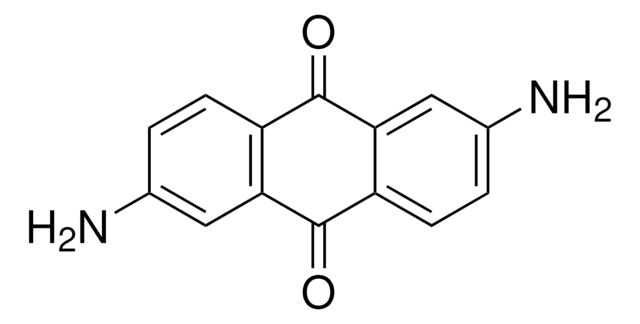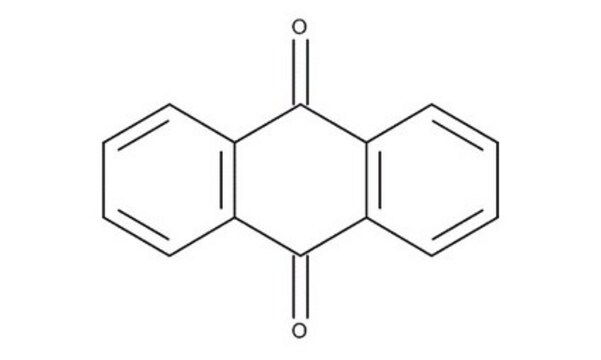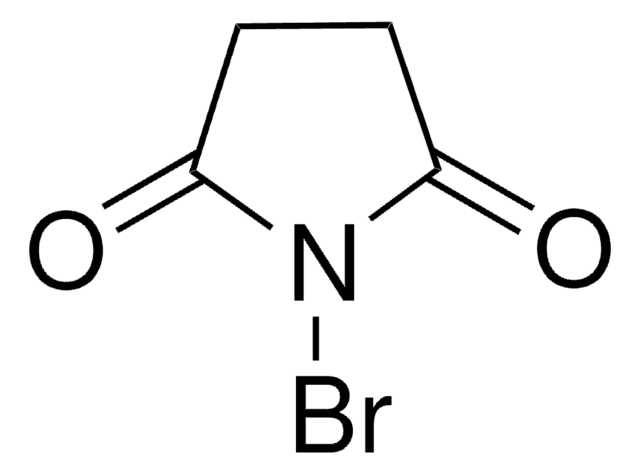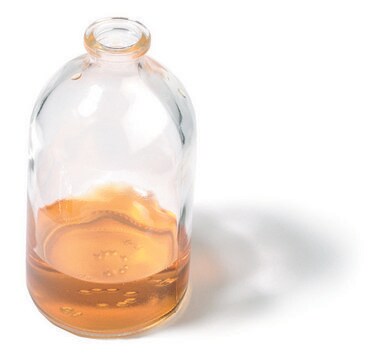65800
2-Methylanthraquinone
technical, ≥95% (HPLC)
Sinonimo/i:
2-MAQ
About This Item
Prodotti consigliati
Grado
technical
Livello qualitativo
Saggio
≥95% (HPLC)
Impurezze
3-4% 1-methylanthraquinone
P. ebollizione
236-238 °C/10 mmHg (lit.)
Punto di fusione
170-173 °C (lit.)
Gruppo funzionale
ketone
Stringa SMILE
Cc1ccc2C(=O)c3ccccc3C(=O)c2c1
InChI
1S/C15H10O2/c1-9-6-7-12-13(8-9)15(17)11-5-3-2-4-10(11)14(12)16/h2-8H,1H3
NJWGQARXZDRHCD-UHFFFAOYSA-N
Informazioni sul gene
human ... CTSG(1511) , ELA2(1991)
Cerchi prodotti simili? Visita Guida al confronto tra prodotti
Applicazioni
Codice della classe di stoccaggio
11 - Combustible Solids
Classe di pericolosità dell'acqua (WGK)
WGK 3
Punto d’infiammabilità (°F)
408.2 °F - closed cup
Punto d’infiammabilità (°C)
209 °C - closed cup
Dispositivi di protezione individuale
Eyeshields, Gloves
Scegli una delle versioni più recenti:
Possiedi già questo prodotto?
I documenti relativi ai prodotti acquistati recentemente sono disponibili nell’Archivio dei documenti.
I clienti hanno visto anche
Il team dei nostri ricercatori vanta grande esperienza in tutte le aree della ricerca quali Life Science, scienza dei materiali, sintesi chimica, cromatografia, discipline analitiche, ecc..
Contatta l'Assistenza Tecnica.
